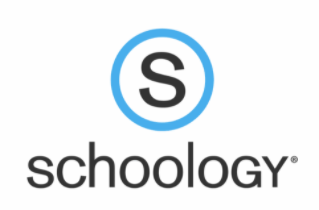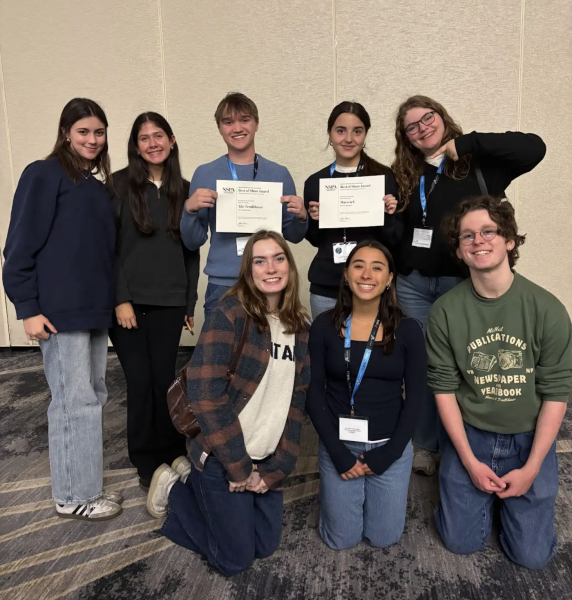Strangers in a Strange Schoology Land
How the implementation of Schoology has traded a complicated time for an even more frustrating one.

Image by https://www.schoology.com/
Students across RRISD are using Schoology for their learning every day
At the beginning of this school year, RRISD implemented the learning management system, Schoology (skoo.luh.jee), across the district. Schoology is being used on every campus for assignments, attendance, grading, assessments and conferencing. Schoology has quickly gone from being quickly introduced to becoming a staple part of every school day.
The thing is, that’s a big part of its problem. Schoology has become a necessity for our curriculum, despite its technological issues, functional clunkiness and overall unfamiliarity throughout RRISD.
Schoology was given to teachers, students and parents way too close to the start of the school year. In July, it was announced that the district was looking to use Schoology for the upcoming year. Very few people had heard of or used it before, so there was very little opportunity for anyone to become familiar with the system. Nevertheless, teachers were given access to the system only a single week before the first day of school. The teachers had to rush to create their classroom, and learn how to input grades, upload classwork, take attendance and so on, all in about five days time. Many still struggle to truly grasp how to use the platform, but it is hardly their fault. On top of everything else they’re asked to do as educators, learning how to use a completely new website is frustrating and takes time. This same struggle has affected students and some parents as well. The first couple of weeks were a nightmare for students and parents trying to log on or just simply turn in work. This need for quick adaptation only exacerbates the difficulties of this year’s new approach to learning, and makes the entire school experience all the more stressful and unpredictable.
When opening up the Schoology website, there are a whole lot of things on the screen, but most of the buttons are left untouched. After a while, it starts to show that it’s hardly functional at all. The assignment displays are incomprehensible. Most of the time, assignments will still pop up even after you’ve submitted them, and the only way to make sure that you turned them in is to actually go into the assignment. Navigation is also convoluted, where you have to go through a huge mess of pages just to find directions for assignments or last week’s notes. Schoology overly complicates things that should be simple tasks, but even worse, most of the buttons on Schoology are never used. Every day, there are only a couple of tabs that you need to use, while everything else, like Resources, Calendar and Recent Activity, is mostly left unused and ends up just taking up space. This can be traced back to teachers having so little time to prepare. They only learned the basic functions of Schoology because that’s all they had time for. And, it was difficult for teachers to learn just the basics because there are too many buttons on the screen at any given time. Schoology as a learning management system may have a lot of features, but as a website, it has a confusing and bloated user interface.
When anything is changed to an entirely online format, there will always be technology issues. The internet is invaluable, but sadly not infallible. Some problems can be fixed and forgotten. However, with Schoology, there’s almost a feeling that we know it’s going to mess something up. Teachers are constantly checking if their students can actually see the assignments, because sometimes they just won’t show up. So much leeway has to be given to students because of all the issues that arise with either accessing classwork or turning things in correctly. Not to say that all of the problems that happen are directly Schoology’s fault. Their system has to keep up with an incredible amount of users, and people’s own internet capabilities vary. But even if a lot of the problems have been resolved or at least worked around (huge amount of thanks to the IT staff across the district), the sense of unreliability still remains. No one is exactly enthusiastic about Schoology, and comments about how bad Schoology is, warranted or not, have become commonplace. That sense of unreliability stems from unfamiliarity. The system is just too new and too problematic that we can’t feel comfortable using it. These are unprecedented times, sure, but there were other systems that we already familiar and comfortable with, like Google Classroom or eLearn. They had their own problems, but at least we had used them many times before, so we would fix them and move on. Nowadays, it doesn’t matter if problems happen because of Schoology or because of the user, we will continue to focus on those problems. All of the systems we previously used were upended by making everything based on Schoology, a platform that we don’t trust and don’t want.
RRISD purchased Schoology for two years. It’s unclear exactly how long school will continue to look like what it is now, or how long Schoology will play a major part in student careers. But it is certain that the district will continue to use Schoology to some degree. Frankly, that’s okay. We will learn and we will get better. But there was no need for us to be this far behind. If we had used Google Classroom instead, things would not have been as confusing. There are actual curriculums now, unlike in the spring, with a lot more work, but we could’ve had it all in a place that we were at least content with. There are some shortcomings in Classroom that Schoology was supposed to help fix, but Schoology just ended up creating more problems and frustration. At the very very least, if Schoology was a done deal, the district should have given people more time to get used to Schoology, especially teachers, because we’re currently still playing catch up, learning how to learn. Like the Schoology website says, “discussions are used by everyone to foster ideas and bring your entire district together.” Maybe if the district had asked around a bit, everyone would be a little more happy, because at least we could’ve made decisions together. But all we can do now is keep staring at our screens and doing the best we can.
Your donation will support the student journalists of McNeil High School. Your contribution will allow us to purchase equipment and cover our annual website hosting costs.










Aleena Bharmal • Oct 23, 2020 at 9:56 pm
As a middle school student at Cedar Valley, I must say I agree we should have been given time to learn about Schoology. I also agree that there are some tweaks that could be made to Schoology. I also think that there are some benefits from using Schoology as well.